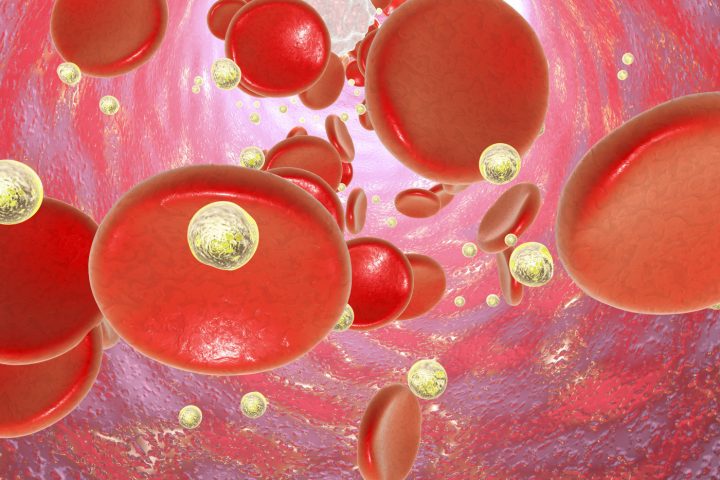Steroid Combo Raises Infection Risk and Remission Chances in AHA, Study Finds

Using prednisone in combination therapies increases an infection risk but also better raises the likelihood of patients with acquired hemophilia A (AHA) achieving complete remission than does prednisone given alone, a Dutch study found.
The retrospective study, which evaluated patients diagnosed over a 27-year period, also found that high neutralizing antibody levels and severe bleeding were independently associated with lower rates of AHA remission.
The study, “Treatment of acquired haemophilia A (AHA): a balancing act. Results from a 27‐year Dutch cohort study,” was published in the American Journal of Hematology.
AHA is a rare autoimmune disorder caused by antibodies against factor VIII (FVIII), which inhibit its blood clotting activity and cause spontaneous bleeds. Treatment for AHA involves both hemostatics to stop bleeding, and immunosuppressants to eliminate the antibodies that target FVIII. Bypassing agents are a common hemostatic treatment for hemophilia, allowing the blood to clot without replacing clotting factors.
In AHA, new treatments have lowered the number of bleeding-related deaths but are associated with an increase in infections, now thought to be a major cause of AHA-related mortality. AHA is considerably rarer than inherited forms of hemophilia, with an incidence of 1.5 cases per 1 million persons, making large-scale studies of the disease and its treatment outcomes challenging.
Researchers at the University Medical Center Utrecht and their colleagues sought to characterize the clinical presentation of AHA and the outcomes of available treatments. Their study’s 143 participants (median age, 73) were AHA patients diagnosed and treated at six centers across the Netherlands between 1992 and 2018.
At diagnosis, 64% of 136 evaluable patients experienced severe bleeding, and 11.8% were admitted to the intensive care unit. The majority of patients (87.4%) had coexisting conditions. Underlying disorders for AHA were found in 36.9% of participants, most commonly cancers, immune disorders, and pregnancy-related AHA.
As first-line treatment, 97.2% of patients were given immunosuppressants, with 67.6% receiving steroid monotherapy with prednisone (steroids alone), and 11.9% receiving a combination therapy of steroid and the immunosuppressive agent cyclophosphamide or rituximab (sold as Rituxan, among other names).
After first-line therapy, 45.5% of these patients went into complete remission (CR), 8.3% died before reaching CR, and 46.3% needed second-line treatment. This consisted primarily of combination therapy, most frequently prednisone with cyclophosphamide (54.1%) or rituximab (21.3%).
Importantly, 79.5% of all AHA cases eventually reached CR, with a median time to CR of 10.7 weeks. Relapse occurred in 15.4% cases after stopping prednisone, and 25% patients after stopping immunosuppressants. At the analysis cut-off date, 75% of the participants were in CR, 19 of whom (18.6%) were using immunosuppressive medications.
The research team investigated 212 treatment-related adverse events reported by 67.7% of patients. The vast majority (95.7%) were related to immunosuppressants, 3.3% to hemostatic therapy, and 1.1% (one patient) to both types of therapy. Adverse events included infections, cardiac events, stroke, diabetes mellitus, and thromboembolism (blood clots that obstruct blood vessels).
Prednisone accounted for the majority (52%) of the immunosuppressant-related adverse events. Age was the primary risk factor for side effects, with patients 50 or older having a significantly higher risk.
Specifically, infections were experienced by 36% of patients. The most common were pulmonary and urogenital. Sepsis was recorded in 28.6% of cases. Infections were the most frequent cause of death (19.2%).
Combination therapies including prednisone significantly increased the risk of infection compared to prednisone monotherapy.
In contrast, steroid combination therapy was associated with a CR rate of 73.3%, significantly higher than prednisone alone (35.2%). High anti-FVIII antibody levels and severe bleeding were also key predictors for failure to reach CR. Primary predictors of AHA-related mortality were coexisting cancer and ICU admission for severe bleeding at the time of diagnosis.
Overall, the researchers suggested that these potential predictors for infection, remission, and mortality could be used to identify the most appropriate therapies for individual patients.
“Prompt inhibitor eradication by immunosuppressive therapy to reduce the bleeding risk, while at the same time minimalizing the risk of adverse events is a balancing act in the typically old and frail AHA patient. Ongoing research and further clarification of prognostic markers is essential to find the optimal balance,” they wrote.
Among the study’s limitations were its retrospective nature, and the potential selection bias of patients with more severe symptoms who require treatment at academic hospitals, the team added.






